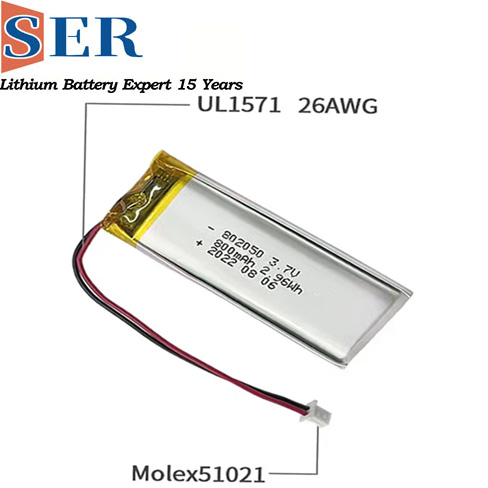3.7V Rechargeable Cylindrical Polymer Batteries and 3.8V Secondary Ultra-Narrow Polymer Batteries
Comparison and Analysis of 3.7V Rechargeable Cylindrical Polymer Batteries and 3.8V Secondary Ultra-Narrow Polymer Batteries

I. Introduction
In the ever-evolving world of rechargeable batteries, advancements in technology and material science have led to the development of various battery types, each with its unique set of characteristics and applications. Among these, 3.7V rechargeable cylindrical polymer batteries and 3.8V secondary ultra-narrow polymer batteries have gained significant popularity due to their high energy density, lightweight, and compact design. This article aims to provide a comprehensive comparison and analysis of these two battery types, highlighting their key features, performance parameters, and potential applications.
II. Overview of 3.7V Rechargeable Cylindrical Polymer Batteries
A. Technology and Design
3.7V rechargeable cylindrical polymer batteries, also known as lithium-ion polymer (LiPo) batteries, are a type of lithium-ion battery that uses a polymer electrolyte instead of a liquid electrolyte. This design choice allows for a more flexible and lightweight battery construction, making them suitable for a wide range of applications. The cylindrical shape of these batteries further enhances their versatility and portability.
B. Key Features
The primary features of 3.7V rechargeable cylindrical polymer batteries include:
High energy density: These batteries can store a significant amount of energy per unit weight, making them ideal for power-intensive applications.
Lightweight and compact: The polymer electrolyte and cylindrical design contribute to the lightweight and compact nature of these batteries.
Fast charging capabilities: Compared to other battery types, LiPo batteries can be charged relatively quickly.
Low self-discharge rate: The polymer electrolyte helps reduce the self-discharge rate, enabling longer shelf life.
C. Applications
Due to their unique features, 3.7V rechargeable cylindrical polymer batteries are commonly used in applications such as:
Consumer electronics: Smartphones, tablets, and portable game consoles often utilize LiPo batteries for their power needs.
Remote-controlled devices: Drones, radio-controlled cars, and other RC devices rely on LiPo batteries for their extended flight and runtime capabilities.
Electric vehicles: While not as common as in consumer electronics, LiPo batteries are also finding their way into electric bicycles and scooters.
III. Overview of 3.8V Secondary Ultra-Narrow Polymer Batteries
A. Technology and Design
3.8V secondary ultra-narrow polymer batteries represent the latest advancement in polymer battery technology. These batteries feature an ultra-narrow design while maintaining high energy density and excellent performance. The key to their narrow design lies in the use of advanced materials and manufacturing techniques.
B. Key Features
The key features of 3.8V secondary ultra-narrow polymer batteries are:
Ultra-narrow design: These batteries have a significantly narrower width compared to traditional polymer batteries, making them suitable for space-constrained applications.
High energy density: Despite their narrow design, these batteries maintain high energy density, ensuring sufficient power for various applications.
Stable performance: The use of advanced materials and manufacturing techniques ensures stable performance and long cycle life.
Safety: These batteries are designed with safety features such as overcharge and over-discharge protection to minimize the risk of accidents.
C. Applications
The ultra-narrow design of 3.8V secondary polymer batteries makes them ideal for applications where space is limited, such as:
Wearable devices: Smartwatches, fitness trackers, and other wearable electronics can utilize these batteries to power their compact designs.
Medical devices: Implantable medical devices and other space-constrained medical equipment can benefit from the high energy density and stable performance of these batteries.
IoT devices: In the realm of the Internet of Things (IoT), where devices are often small and need to operate for extended periods, 3.8V secondary ultra-narrow polymer batteries offer an excellent power solution.
IV. Comparison of 3.7V and 3.8V Polymer Batteries
A. Performance Parameters
In comparing the performance parameters of 3.7V rechargeable cylindrical polymer batteries and 3.8V secondary ultra-narrow polymer batteries, we find that both types offer excellent energy density and charging capabilities. However, the key difference lies in their design and intended applications. The cylindrical design of 3.7V batteries makes them more versatile, while the ultra-narrow design of 3.8V batteries is specifically tailored for space-constrained applications.
B. Cost Considerations
Cost is another important factor to consider when comparing these two battery types. In general, 3.8V secondary ultra-narrow polymer batteries tend to be more expensive due to their specialized design and advanced manufacturing techniques.





